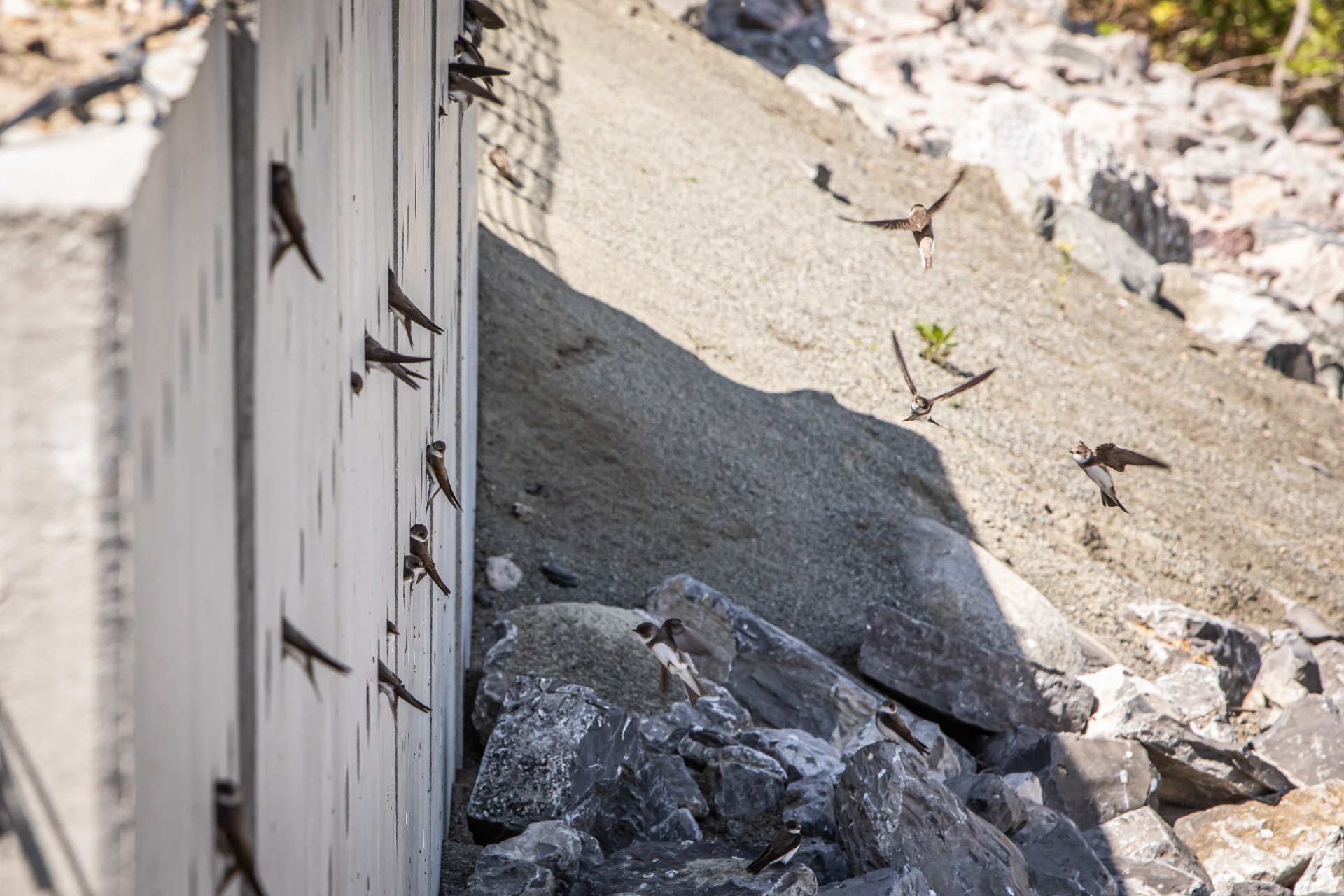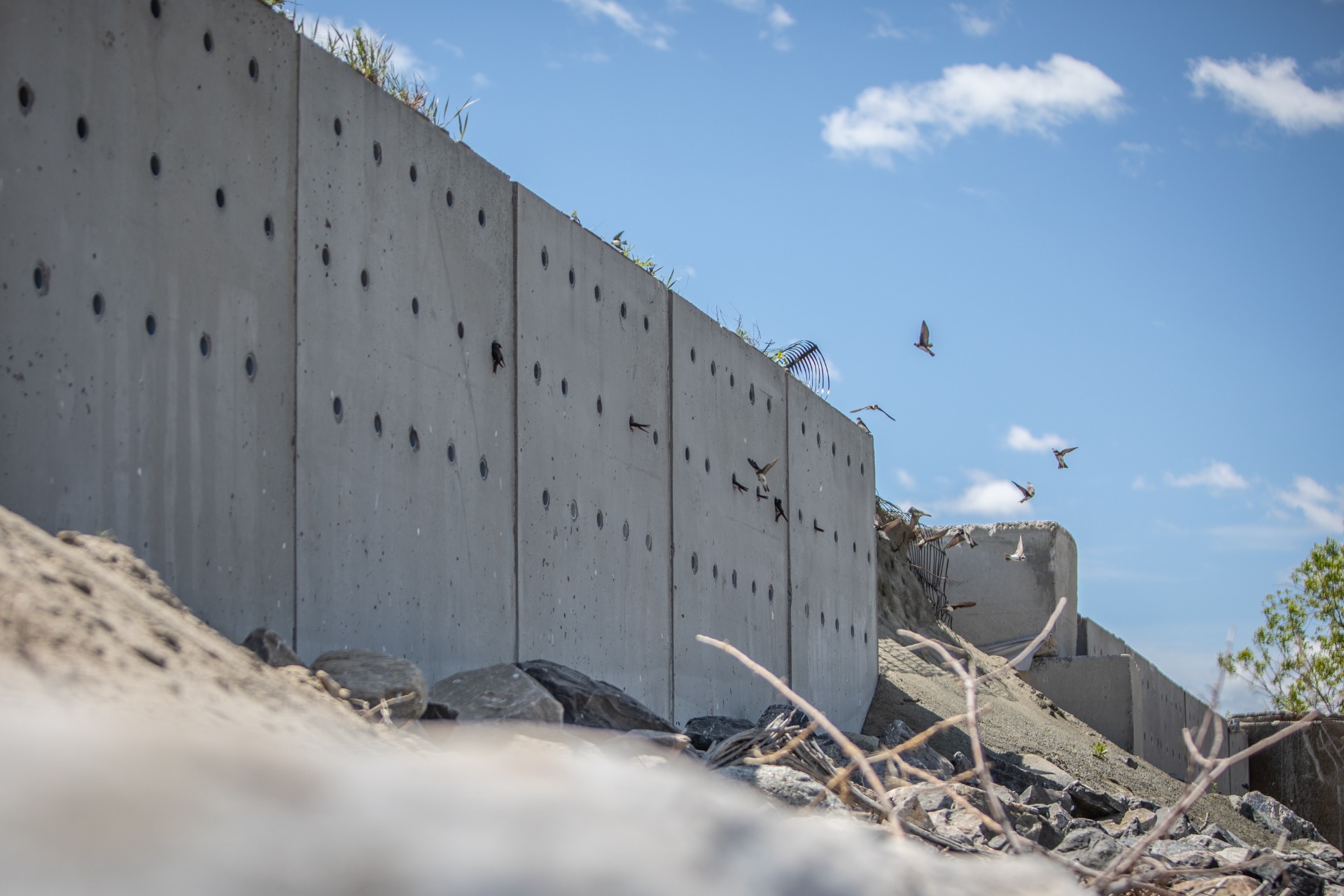The swallow nesting box
Did you know that Beauport Bay is home to the first artificial nesting box for bank swallows in North America? This is how this project came about at the Port of Québec.

2014
In 2014, the sharp decline in the bank swallow population was brought to the attention of the Port of Québec. At this time, the natural habitat of the few bank swallows that occupy Beauport Bay is truly atypical, as they nest in sand banks very low to the ground, with very little slope. The swallows are therefore very exposed to predators, rising tides, and bad weather. The Port therefore decided to improve their natural habitat to make it more favourable for reproduction and the survival of the colony.

2015
Inspired by engineered nesting structures in Europe, a first artificial habitat structure is built in the spring of 2015 as a pilot project. The model designed combines two types of nesting boxes: pre-drilled concrete walls and sand banks, similar to the swallow’s natural environment. Shortly after the nesting box installation, the colony completely abandoned its initial environment to come and settle there.

2018
In 2018, based on the success of the pilot project, the Port builds more permanent structures, again using the two types of nest boxes: sand walls and pre-drilled concrete walls. While the swallows initially preferred the sand walls, they are sometimes unstable and can collapse. We notice that the swallows quickly adapt to the concrete walls, so that in 2018 more than 80% of the colony nests there. At the end of the season, we see that the colony has increased by 40%.

2019
In 2019, both nest boxes are still in use and a total of 84 nestlings are counted. In the fall of 2019, at the end of the nesting season, the temporary nesting box is relocated, and its structures are juxtaposed to the permanent nesting box, thereby enhancing the carrying capacity of the more productive nesting box.

2020
There were 112 broods in 2020, which is a 33% increase over 2019. We notice that the colony still prefers the concrete walls, which appear to be fully utilized. However, there is still space in the west wall, so there is no need for new structures.

2021
In 2021, the number of swallows is estimated up to 150. These results once again confirm the project’s success and the healthy condition of the colony. Since the swallows always seem to prefer the concrete walls, the sand walls were removed and replaced with two new concrete walls.
Swallows
In mid-April, you should see the first bank swallows in Beauport Bay, after their migration from South America. They usually use the nesting sites from mid-April to the end of August.

Upon arrival, they scout for a few days and then begin digging burrows to lay their eggs. The female lays 4 to 5 eggs which she incubates alone for about 15 days. The swallows are blind at birth and have no plumage yet. This is why one of the parents stays with them permanently in the nest to keep them warm. It is only on the 6th day that their eyes open. Then comes the time when the chicks must be fed, this is when we see the most comings and goings. In the first days of June, the baby swallows need food to grow.

To feed their young, the parents can make up to 200 round trips a day between the nest and the sky.

The bank swallow is the smallest of our swallows! They can be distinguished by their brown backs, white bellies, brown collars, notched tails, and angular wings.

One month after birth, the swallows are already very good flyers and can hunt for food like their parents. At the end of the summer, the swallows will begin a long journey to their destination in South America to spend the winter.
